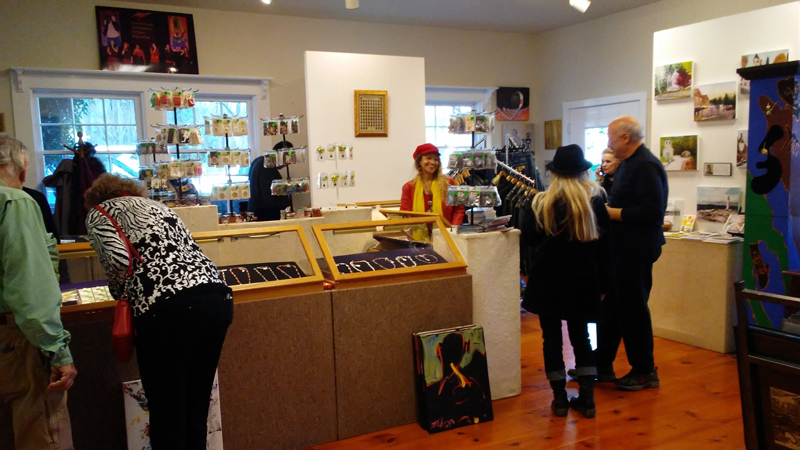
“How do I get people to buy my stuff???” I hear you ask. Actually, that’s almost the whole of the conversation these days, because marketing isn’t like it used to be, and to begin with, that’s the wrong question.
It isn’t “How do I get people to buy my stuff?”, it’s “How do I get people to just L@@K at my stuff???”, and that’s the hardest question to answer, especially when you’re talking about online sales and marketing.
Let’s say that you’ve just invented the greatest tag line ever invented. Let’s say the tag line is “Cut Your Food Budget by 90%!!!”, which is the ultimate Breakfast-Table Subject.
Okay, now let’s suppose 1 million people actually see and read your one-line message. Let’s further suppose that out of that 1 million viewers you get 25,000 click-throughs, which is a LOT, as online marketing goes.
Uh-oh, what if only 12 people see it? Even if all 12 result in a click-through, it won’t be enough to sustain the effort beyond the first gambit.
Well, all we have to do is figure out how to get your tag line “Cut Your Food Budget by 90%” in front of one million viewers, then we’ll worry about getting them to the click-throughs.
That’s all we have to do. Get our message in front of one million viewers, without any money and without contacts, without a network, without a prayer.
Well, the prayer we can manage, but don’t count on it — angels are already busy enough.
So what is it that motivates people these days? What turns them on? What interests them enough to actually buy something or try something?
Is there any life out there at all?
The problem is that the future is so damn bleak. We have the choice of living under an armed group of warlords or a despotic central dictatorship.
It’s not enough to keep the mind alive. Who wants to survive in a world like that?
That’s the reason nobody is doing anything nowadays — there’s no point. It’s all going down the drain anyway, and they’re quite right. It is pointless. No real reason to fight for a future you haven’t got.
So while that’s going on, we have to make a living.
The best job in the world right now is one that you can perform at home, while in near-complete lockdown.
If you’re not afflicted with boredom, you’ll do all right. If you get stir-crazy and cabin-fevered, you might not like the isolation, but if you have a natural tendency to be anti-social and anti-trivia, you should be fine.
Meanwhile, if you can’t use your natural personal charm to sell door-to-door, what can you do to move some merchandise?
Oh, it doesn’t have to be merchandise. It can be a service of some kind, for instance. In the case of my rare books and master prints, it’s a question of finding a suitable home for the thing.
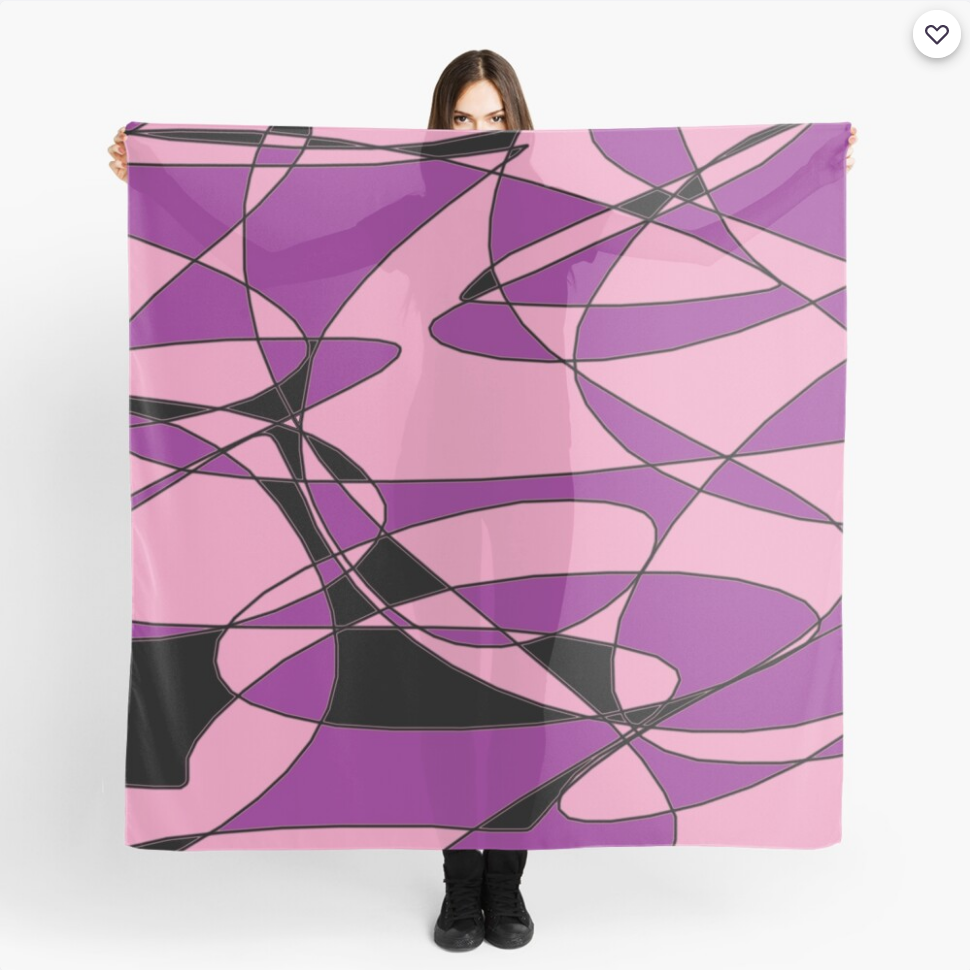
So even if the merch is exactly what the customer wants and is eager to find and to buy, you still have to get SOMETHING across to them — they have to see, hear or otherwise come into contact with your tag headline or a photo or some graphic or soundbyte.
That’s all. Just that momentary first contact with your message, which is the premise of the whole thing — Juno’s Law — “You can’t scare somebody if they can’t see or hear you.”
So how do you get someone to see or hear you?
It’s really very simple. Just remember that it isn’t the message itself — the actual tag line doesn’t matter at all.
It’s getting whatever it is, tag line, graphic or both, out to the consumer, in plain sight of the masses. Other than plaster it up on a wall in the 34th street subway station, how do you do that?
Well, one way to do it is to do exactly that. Plaster it on the wall of the subway station. How? What’s the matter, ain’t you ever seen the result of photoshop?
Put yourself in the train station on a greenscreen backdrop, and sing, dance or otherwise entertain.
Put that up on youtube as a 10-second “#Shorts” and you have a possible winner — at least you have a CHANCE.
If you do nothing, you guarantee failure.
You can also put your message into facebook and instagram and other channels of social media, and see how far that gets you.
You’re going to need a large audience — that’s easiest gotten on facebook, but it’s not easy. You need to become a market maven, some sort of expert in some niche area, in order to build that kind of population, but it can be done in a matter of a few weeks, just to get started.
Cast Thy Bread Upon the Waters.
Hey, that’s good advice anytime, and you can quote me on that. Yessir, cast away — what can it hurt? Keep casting. Cast some more. Don’t stop casting your bread on the water. That’s what it’s all about.

Well, strictly speaking, that’s not entirely true. It’s all about the Hokey-Pokey, and it’s all about the bass.
There’s entirely too much communication going on around here. We need less talk and more action.
So what about listing something on eBay or Etsy? There’s the possibility of hundreds, thousands and even millions of viewers there, and I’ve proven that it’s possible to get thousands of hits on an eBay listing — I’ve done it hundreds of times.
Problem there is, you get a lot of hits but not a lot of buyers, because there’s nowhere really to exercise persuasion — you have to rely on the buyer’s knowledge and interest, and that doesn’t happen often where a buyer will actually know and correctly appraise what they’re buying.
I really paid my dues to learn the rare print business — there are thousands of things you have to know right away before you buy or sell a single print, and having a background as I have in art history certainly helps.
It also helps if you’re an experienced artist and printmaker, with experience on an etching press and with etching plates and stone lithography, so you can evaluate a print and decide on its probable authenticity.
I can do the same with some European paintings, notably Dutch and Flemish paintings of the 17th century, of which I have several currently for sale from my personal collection.
I have an advantage dealing in modern masters — I was there, and I even painted with a few of them. My mother bought Picassos directly from Picasso, and most of the artists from Hitler’s Europe taught at the Museum of Modern Art’s Children’s Art Carnival which, due to my mother’s work as a staffer, I attended daily from 1945 through 1949, when the Art Carnival closed due to funding difficulties.
That’s what happens in museums, even privately funded ones. They run out of money, because the people that donated the stuff are gone — it was all about tax evasion — and the people who go to museums don’t, anymore, with the exception of tourists who only go to the gift shop when they take the museum tour.
Let’s evaluate your chances of selling something.
For instance, what if you put up an original painting, painted by you — and what’s more, it’s personally signed by you?
What are your chances?
If anyone even looks at it, all they’ll see is the painting. They have no idea what it’s worth or what the story is behind it if, indeed, there is one.
Now, if the seller has the opportunity to do so — that’s you, you’re the seller as well as the artist, get it? — if you have the chance to say something, you might mention that you’re a famous artist, in case they don’t already know that.
In the rare event that you’re not a famous artist, it’s going to be about the size of the piece, the frame, if any, the quality of the painting and the desirability of the item to the buyer.
In short, you’re on your own. You have no MARKET. That’s the point. If you have a place in what’s called the “Secondary Market”, you have a chance to sell it, because there’s a formal expectation of value.
If your art is LISTED, you have a shot at it. If not, you have to depend on the desirability, and that’s a tough sell.
Now, if you have some famous artist’s work and are willing to sell it — at a price — you might attract a buyer or two based on those things, which is why I always have a good supply of 16th and 17th century paintings and prints on hand.
I also have a good supply in my gallery collection of modern masters — Chagall, Miro, Matisse, Dali, Renoir, Degas, Gauguin and many more.
Those are my loss-leaders. They attract buyers, and if they’re priced right, they sustain the gallery well enough, and there are always those lucky strikes you come across if you’re in the business long enough, like my Unique Renoir Green and my perfect “Berneval”, with all three bathers in first state of the first state, uncleaned borders remaining.
Those are real cash-cows, but you have to know what you’re looking for, and often you have no second opinion to help you decide to buy, sell or trade.
Merely holding artwork is for amateurs. You have to be prepared to let it go at the right time to the right buyer.
I have several dozen pieces that I’d sooner not sell, but I have to consider all offers, and if someone meets my price, I’m obligated to sell it.
The price I set is a combination of the actual print market wholesale price plus how much I like the piece, which comes out to about the same as a standard retail markup.
Once the customer comes into the shop, it’s just a matter of time — you need to build up the customer’s confidence in your mastery of the subject and knowledge of the market so your customer can get the best possible price, whether buying or selling.
If someone buys a piece at one million dollars, you’ll be lucky to see $10,000.00 of that in the clear. That’s not where the money is made.
You’ll never get hold of a fabulously valuable artwork at a garage sale — it’s not that it’s not possible, it’s just not very likely — and you can’t depend on that kind of raw luck.
So what you do is, you bring in customers for the great stuff you’ve managed to put up for sale — and sometimes that’s only one item — with the idea in mind that junk never sells, but greatness always sells.
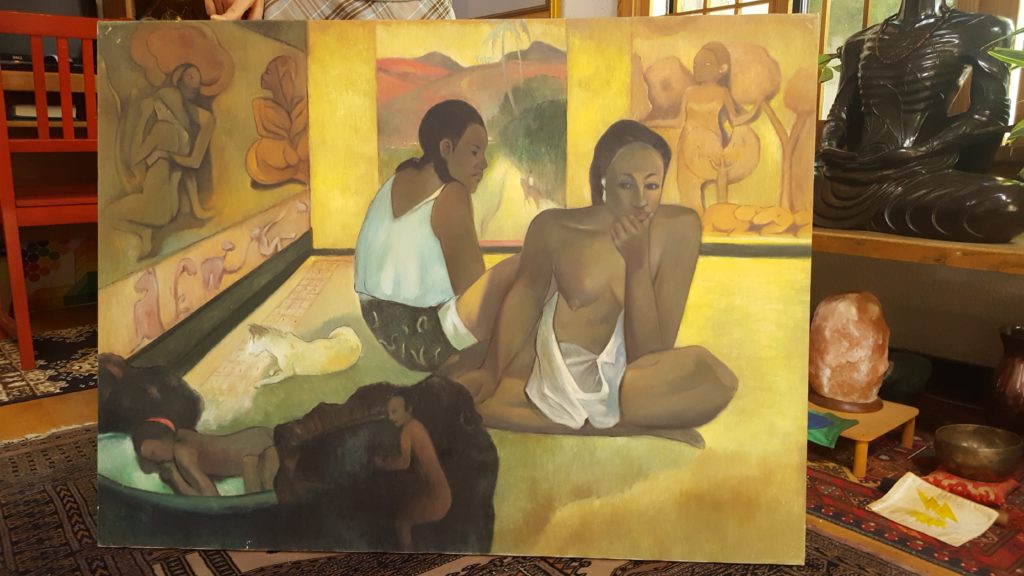
Get the best and sell the best, and enjoy a good reputation. Don’t try to save money on the item. That’s not where you save money. You save money in the packing and shipping.
The product should always be the best of the best.
My 17th century prints have been seen by dozens of experts, and been on display many times in galleries and museums. Some have famous collector stamps, and many of them are first state lifetime impressions.
The thing is, in a gallery, you need something for the women and something for the men. The nude paintings and statuettes are clearly there to keep the husbands and boyfriends occupied while the women go shopping.
That means not only fine art, but jewelry and apparel of the expensive kind.
Problem is, the jewelry can’t be junk, but who can afford a bunch of artwork plus jewelry? And then there’s the clothing angle. With all the things you can do on PAOM and Redbubble and Zazzle, there’s no limit to the fashions you can turn out from your “factories” online.
So all you have to do is get a sale first in the art department, THEN move the customer to other items in the store. Get that first sale first. Shake on it. Only then go on to other items. Watch “American Pickers” to get the idea of how this is done between collectors and dealers.
So that first sale, that’s the thing, and if your customer is coming in looking for an interesting artwork, that’s the rarity — mostly they want what they already know about or think they know about, and that’d be your modern masters collection of Matisse, Miro, Chagall, Picasso, Dali and those folks of the Post-Impressionist Era just before the First World War.
Speaking of which, “World War 3” is in beta — you can find it on the internet fairly easily, but it’s a rather stark example of the kind of video gaming that’s popular now — sort of jerky and mechanical pseudo-realism.
So I hear you asking “What about selling my Chagall original lithos?”
If you have original lithos or etchings of any of the artists I mentioned above, you have a Cash Cow that only needs to be milked to realize the gain, but you have to get those great things in front of buyers, and that’s where we came in.
So where do we begin?
No money. Okay, so no money, so we have to find something that’s free, at least the listing itself is free, and you pay a commission when it sells, like eBay or Etsy.
That’s a potential audience of millions of buyers each day, and it costs you nothing to list. There are other potential large audiences, maybe not in the millions, but significant numbers of possible buyers, and that’s facebook.
Selling on facebook is almost as easy as selling on your website or from your blog, like this:

All you need now is someone who is likely to say “Wow, look! Somebody has an Ostade Smoker at the Window for sale!”
How likely is that?
If you don’t travel in those circles, you have no chance to sell this stuff, better to concentrate on the more likely sellers, like this:
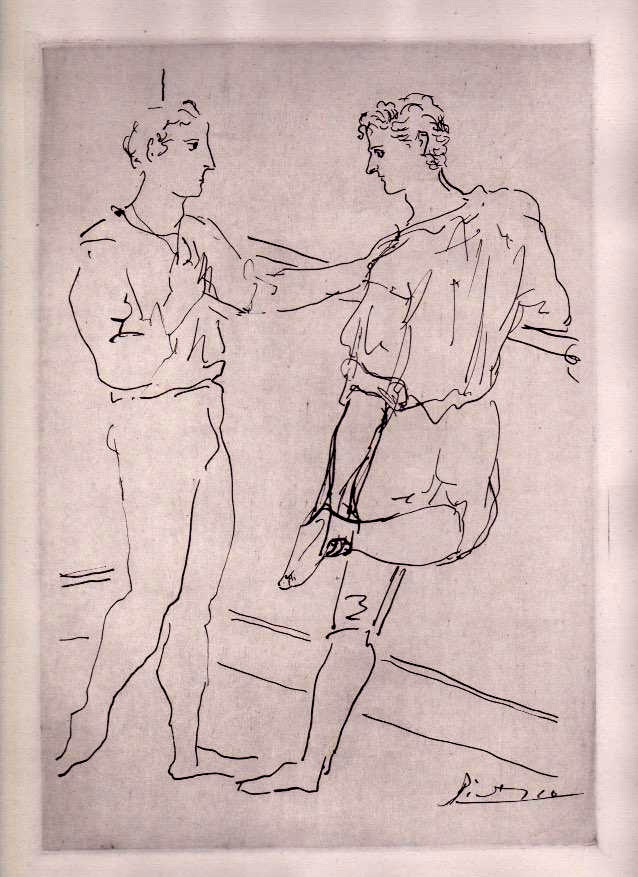
Here’s a Pablo Picasso original engraving from the 1940s, price about $14,500.00 for this one, and I have others.
The point for me as a print dealer is to always have SOMETHING from every major artist, and I’ll reveal to you a professional secret:
It’s always harder to find pieces than to sell them.
Most of my collection hasn’t been on the open market for at least 50 years, so there’s a powerful market for them, but it only happens once — I can’t repeat it without that 50 years to tuck things away in my gallery space as I have.
So if you have no money, you can’t advertise. You have to find the freebies like eBay and Etsy and facebook and such, and you have to depend on one of two things:
- The artist’s name is enough to get the attention, or
- You’ve done something clever with the title and thumbnail.
If you don’t have a few Rembrandts lying about, you’re kind of stuck with the clever title and fascinating graphic, so you might have a struggle up ahead — finding those incredible “click-bait” listings or postings that really turn up the heat and get things going.
What you really need is for your listing to somehow go viral.
Unfortunately for you, that won’t ever happen. What can happen, however, is that you get a few click-throughs for all your trouble, and that won’t improve until your population improves, which means bringing your talents to bear on your social media platform.
You need a following, if you hope to sell your own art, that’s a fact. It isn’t enough to list your name. You have no name. In the case of your own artwork, it’s how appealing is your artwork, plus whatever clever thing you can cram into the short title.
So I’ll give you the secret:
Be unique and set reasonable prices, and stay away from fried foods, and never run after a bus, there’ll always be another.
Now, if you want the Secret Teaching, I have that, too, right at hand:
“Never buy retail.”
If you painted the thing, you have the cost of some canvas, stretcher bars, gesso and wiring, plus a possible extra income from the framing, and that’s going to be relatively small, compared to owning a Modern Master Original Print like this:
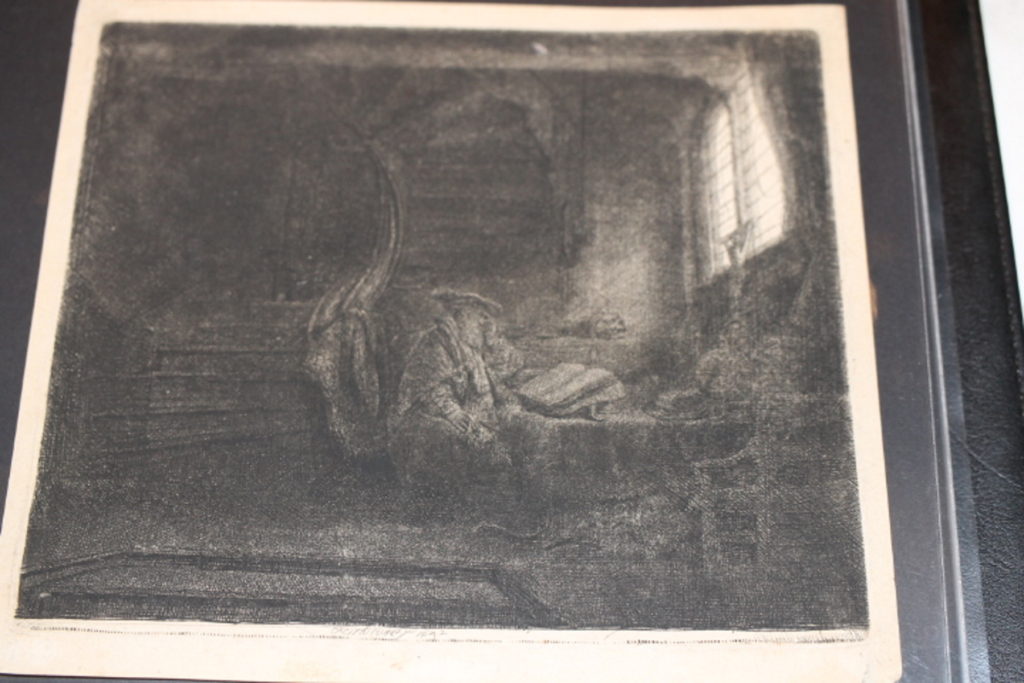
I have ten grand in this piece that I bought at a Sotheby’s auction for our own auctions, outbidding a famous Rembrandt dealer, and was told then by the Sotheby’s expert, who was a personal friend for many years, that I could easily flip it for twice that — this is an exceptional impression before the Watelet retouch, and could sell for as much as $45,000.00 at the right auction, but keep in mind that this is $10,000 in cash sitting there inside this piece waiting for a buyer.
Like all my originals, it’s guaranteed, and will easily hold up to critical expert analysis — in short, it’s the real thing, and it’s very special in that it is an almost perfect print of a very dark subject, a chamber whose only light source is the window at the upper right.
So if you don’t happen to have an original lifetime impression 17th century Rembrandt print somewhere in your sock drawer, you’ll have to get very clever with your headlines, and I’ll tell you right now, if that’s what you’re going to do, you will do better selling your own artwork, because you have less expense in it.
Actually, you have a better chance of selling your own art, and that’s why I encourage you to try.
Never mind about selling old masters — sell yourself!
If you’re worried about whether you’re a great artist or not, rest assured that you’re not, and let it go at that.
Never measure art by “good” or “bad” — there is no bad art, just art that you don’t happen to like. Believe it or not, no matter what it is or who did it, someone will love it.
If you want to SUPPLEMENT the impression your customer gets, you can use the $12 a month KunstMatrix Gallery system to create the impression of a walk-in gallery space and to show relative scale of the art work, which is how I use it.
There’s more to the story of how to sell your art online, and you’re welcome to join us in our quarterly seminars on the subject, or ask at any workshop what you’d like to know.
See You At The Top!!!
gorby

